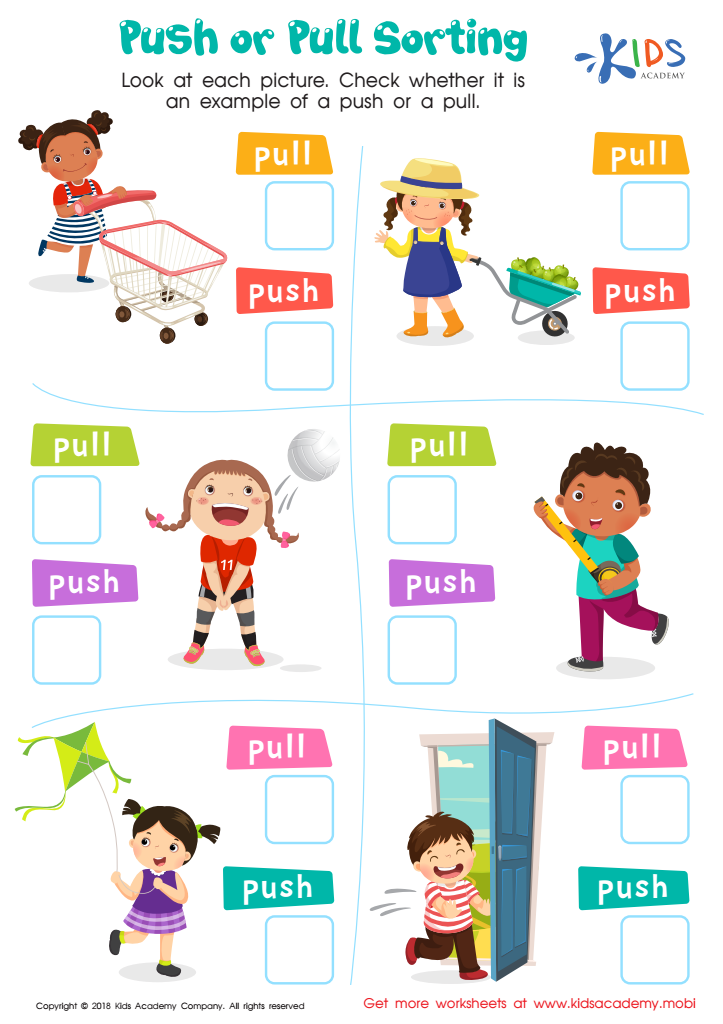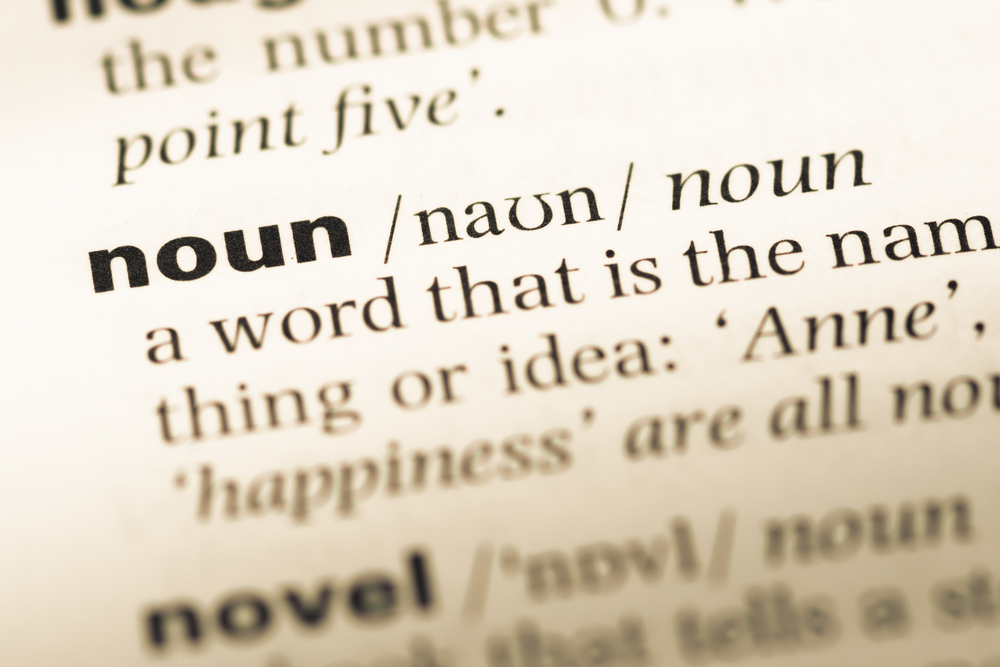Differentiate push/pull Worksheets for Kids
1 filtered results
-
From - To


Push or Pull Sorting Worksheet
Question/Answer
What does the Differentiate push/pull skill mean when it comes to Kindergarten Physical Science learning?
The Differentiate push/pull skill in Kindergarten Physical Science learning refers to teaching children to identify and categorize actions as pushes or pulls. This concept helps them understand basic forces that cause motion or stop objects. By differentiating between pushing and pulling, kids grasp how objects move or change direction in their environment.
What are some effective activities to train students’ Differentiate push/pull skill when teaching them about Physical Science?
Effective activities to train students in differentiating push and pull skills include hands-on experiments like tug-of-war (to demonstrate both push and pull forces), using toy cars to explore how pushing or pulling affects motion, and balloon races to observe how air can push objects. Real-life scenarios like opening and closing doors and playing with magnets can also reinforce these concepts.
Why is the Differentiate push/pull skill important for Kindergarten students?
The ability to differentiate push/pull is important for Kindergarten students because it helps develop their physical coordination, understanding of forces, and interaction with the environment. Mastering these concepts aids in building a foundation for scientific thinking, problem-solving skills, and effective motor skill development, which are crucial for their academic and physical activities.
 Assign to the classroom
Assign to the classroom











